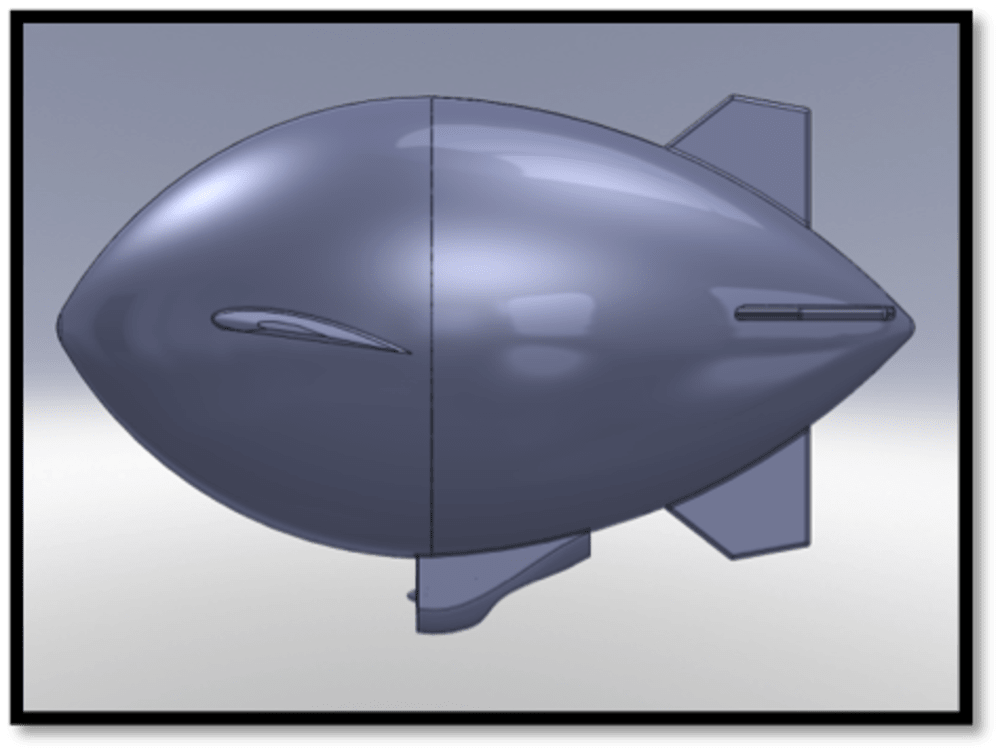The High Altitude Wind Turbine (HAWT) is a sustainable technology project aimed at providing a rapid-response, deployable source of renewable energy marketed for military applications and disaster relief efforts in “off-grid” areas. The HAWT team recognized a deficiency in the mobile power generation market for something which utilized renewable forms of energy. In these regions of the world, power generation is essential. Using a finite resource for this generation -- primarily gasoline, diesel fuel and propane gas -- however, limits the life of the power source to the amount of fuel reserves. In the case of gasoline and diesel, those fuels can go towards much more useful things such as the operation of heavy machinery or automobiles. Renewable energy then is extremely important as it provides a means of constant generation for a much longer period of time and is not dependent upon a finite pool of fuel.
The H.A.W.T. is comprised of a helium filled envelope, a bottom-mounted 600 Watt wind turbine, stabilization fins, side-mounted airfoils, a tethering/conductive cable and a ground-based hub for distributing all of the generated power. The H.A.W.T. utilizes the lifting gas, helium, and the airfoils in order to climb to an altitude of around 1500 ft. In doing so, it is able to tap into the constant airflow stream characteristic of the upper boundary later.
At this higher elevation, the air is moving at an exponentially higher velocity than on the ground due primarily to a lack of buildings, trees and terrain which would otherwise slow it down. Accordingly, this fact then allows the H.A.W.T. to generate much more power than its land-based counterpart (i.e. a stationary, tower mounted wind turbine). Wind energy is able to be tapped into in the upper elevations above nearly every landmass; this is as opposed to solar or hydroelectric energy, which rely on either clear skies or running bodies of water, respectively. Accordingly, the H.A.W.T. is able to capture energy 24 hours a day regardless of cloud cover, altitude or terrain type.
The philosophy behind the H.A.W.T’s design is centered around the following factors: transportability, ease of deployment, efficient energy generation, safety and reliability. As such, every aspect of the design from its total weight to the storage method of the unit itself is in conformance to those values.
Once finished, the HAWT is planned to fit into a transportable crate, which can be carried by two people. This crate will be staked to the ground and the dirigible inflated. It will be allowed to drift into the atmosphere to harvest energy, with a tether attached to a winch for easy retractability.
Like this entry?
-
About the Entrant
- Name:Dan Byrd
- Type of entry:teamTeam members:Casey Griffith
- Software used for this entry:Solidworks, Javafoil
- Patent status:none








